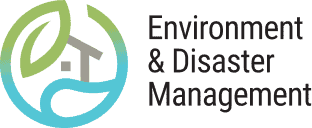From the Netherlands to China to California, people around the world are working with nature to manage flood risk. But as multiple risk factors such as sea level rise, urban development and a changing climate continue to alter landscapes, standards for effective flood management are also changing. Including nature-based methods in flood management portfolios will become the norm, rather than the exception, in building community resilience. These topics and more are discussed in a multi-part flood-themed podcast series hosted by the WWF Environment and Disaster Management program and America Adapts.
Listen to the third episode on the America Adapts website, or play it here:
Part three of the Flood Green Guide podcast comes to listeners from Santa Cruz, California, where flood management researchers from around the world convened in September for a symposium on natural and nature-based features for flood management.
In this episode, co-hosts Doug Parsons and Anita van Breda speak with several symposium attendees about the role of community engagement, setting flood management standards, and storytelling.
First up is Dr. Todd Bridges, a senior research scientist at the U.S. Army Corps of Engineers, where he leads the Engineering With Nature initiative. Bridges and his team work on projects throughout the country, like wetland construction and dune creation, aimed at reducing erosion and decreasing river flooding. They’re also working to create a set of guidelines to help international engineers, scientists and citizens manage flooding in their communities.
“Storytelling is so important in this topic,” Bridges says. His work in many ways breaks from traditional engineering concepts, so it takes a fair amount of persuading other people to get on board. Evidence and data are key in backing up his arguments, he says. “But that data, evidence and information has to be assembled into a story” to help potential collaborators understand the value of his arguments.
“Community engagement is about listening to people’s needs and their interests,” Cath Brooks, a community relations manager at the United Kingdom Environment Agency, tells the hosts. She works with the government-funded agency on nature-based flood management projects in England.
Organizations working on flood management projects often communicate a lot among themselves, she notes, but still wait until they already have solutions in mind before they go into the communities where they’ll be working. “I think we need to be going out a lot earlier,” she says.
Doug and Anita also speak with Enda Murphy, an engineer at Canada’s National Research Council, where he helps develop nature-based coastal projects. Community engagement is a large focus in his work, he says, particularly as the government consults with indigenous communities to determine the impact of potential projects.
The hosts speak last with Maria Dillard, a social scientist working in community resilience with the National Institute of Standards and Technology, or NIST. Her work includes analysis of how communities fare in disasters.
Disasters hit communities at higher frequencies and intensities now than in the past, Dillard notes, so examining how they fare over time is key to her work improving for the future.
The fourth episode in the podcast series will bring in perspectives from people working on flood management around the world to get an on-the-ground look at challenges and opportunities.
Listen to the first episode of the Flood Green Guide podcast here. Listen to the second episode here.
About the Flood Green Guide
The WWF publication Natural and Nature-Based Flood Management: A Green Guide (also known as the Flood Green Guide or FGG) was developed by the EDM program at the request of the United States Agency for International Development Office of Foreign Disaster Assistance. Written primarily for application at the local level, the Flood Green Guide takes users through five stages of flood management project development. The FGG web platform, a free and open source, houses additional resources, case studies and stories from around the world, as well as an upcoming FGG Trainers Guide.
